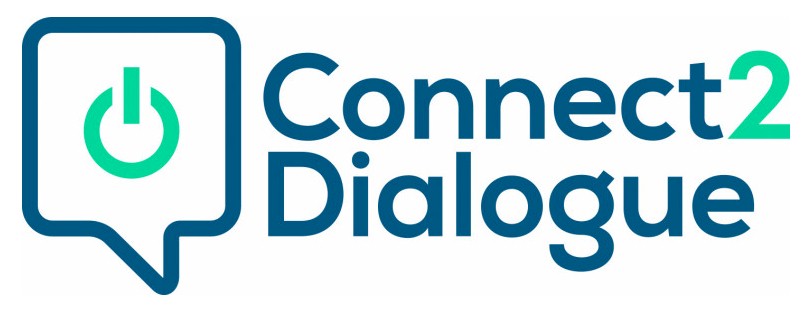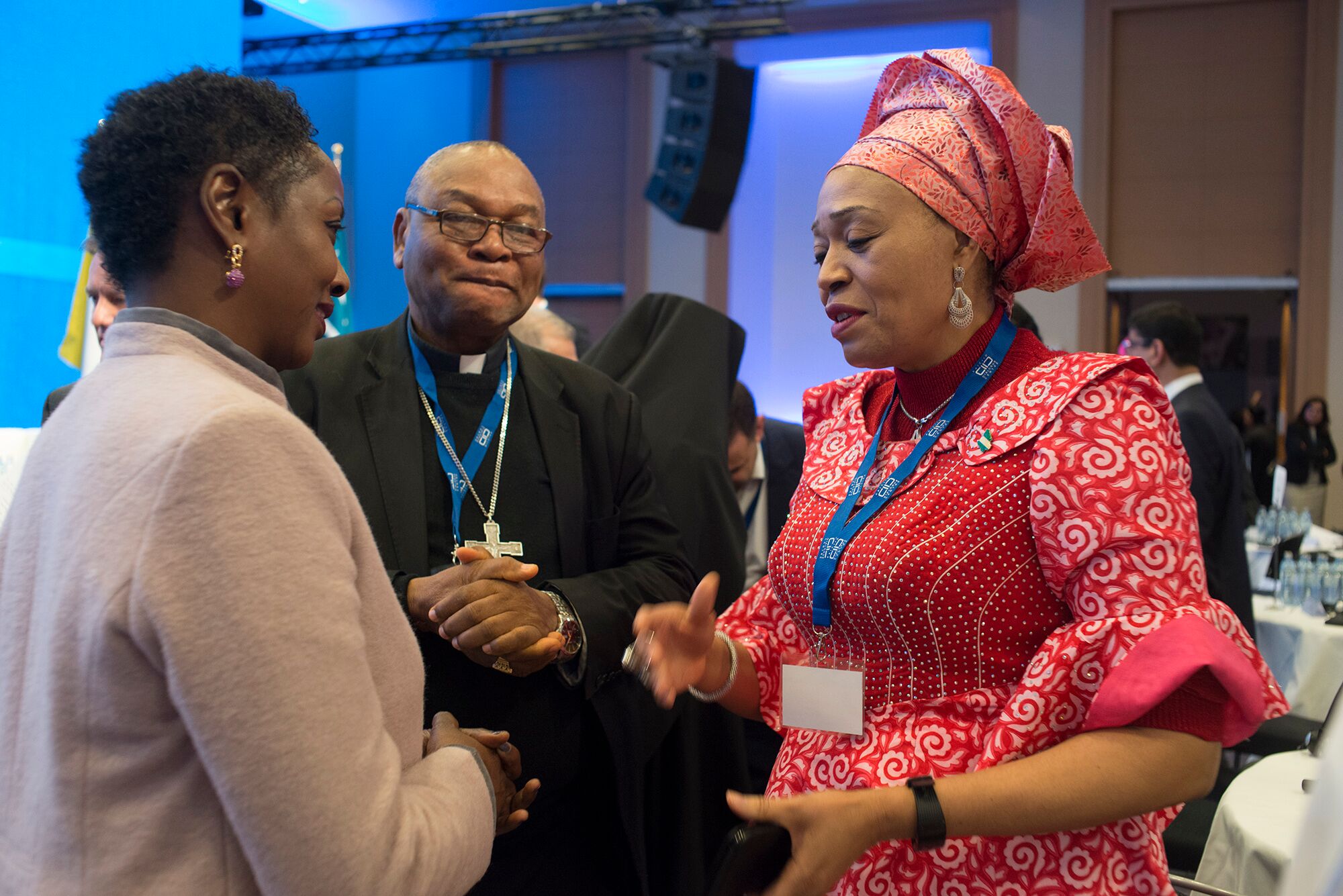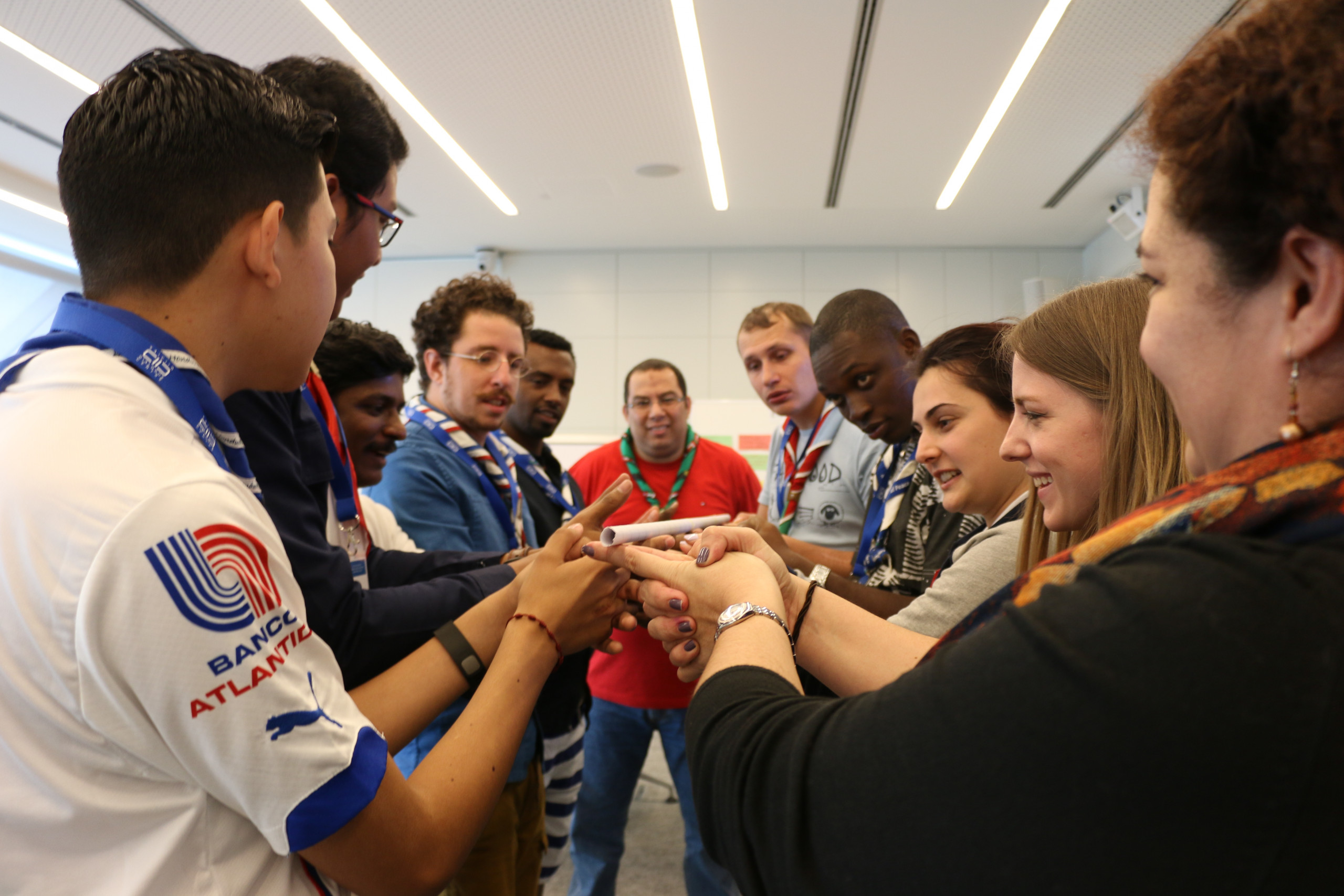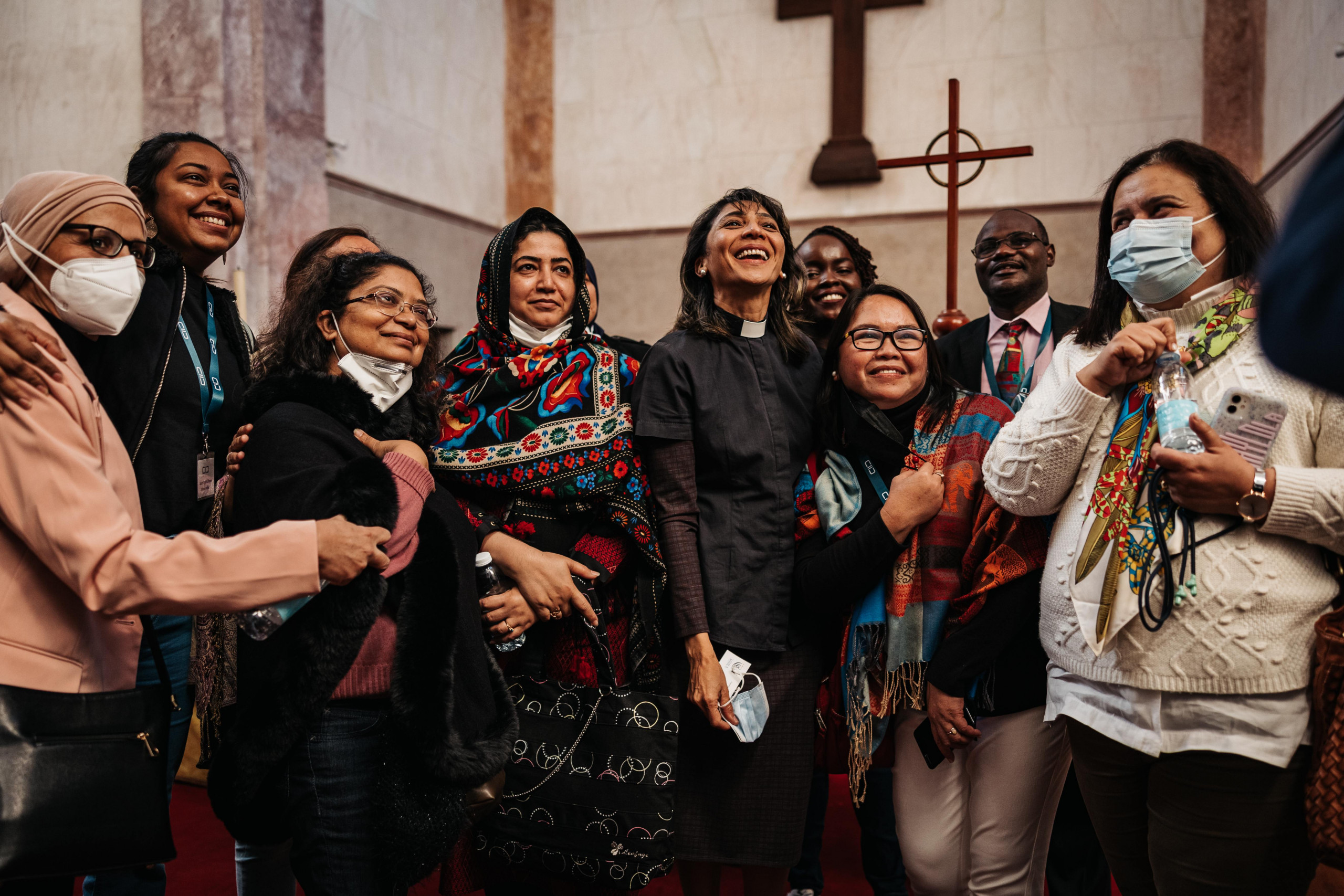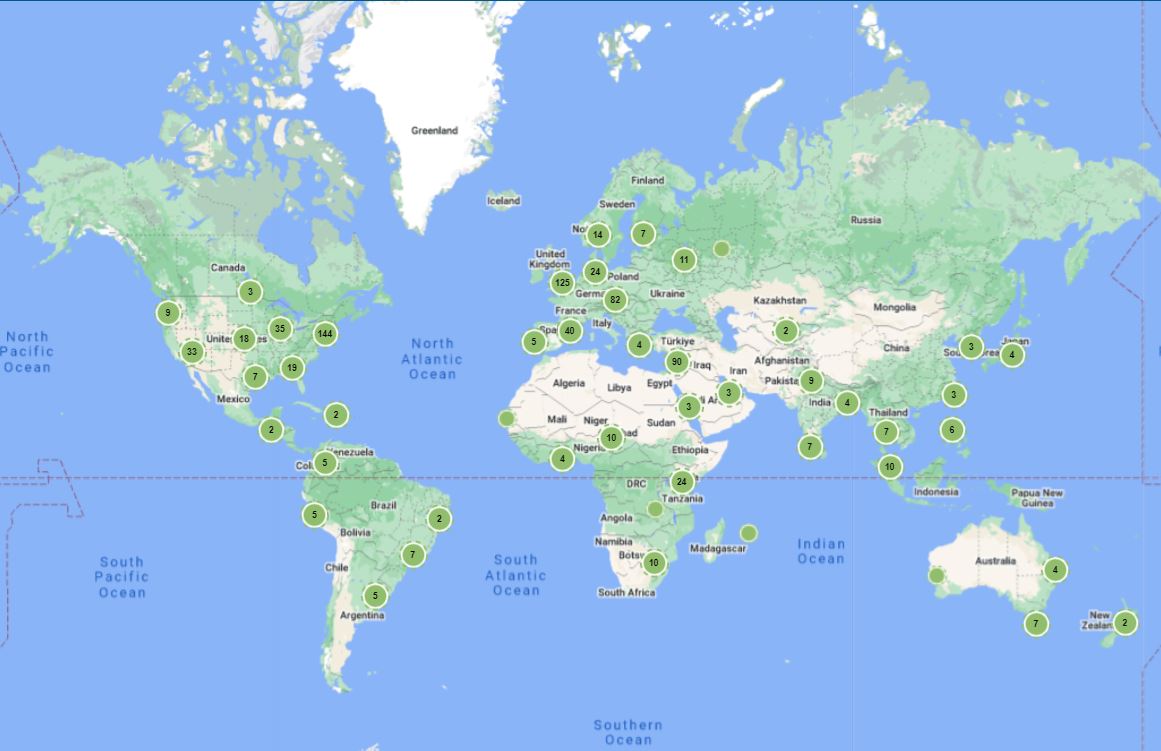Promising Practices
Promising Practices is a collation and expansion of existing documentation on promising practices in interreligious dialogue. Our database offers guidelines and focuses on the concrete implementation of interreligious and intercultural dialogue practices around the world.
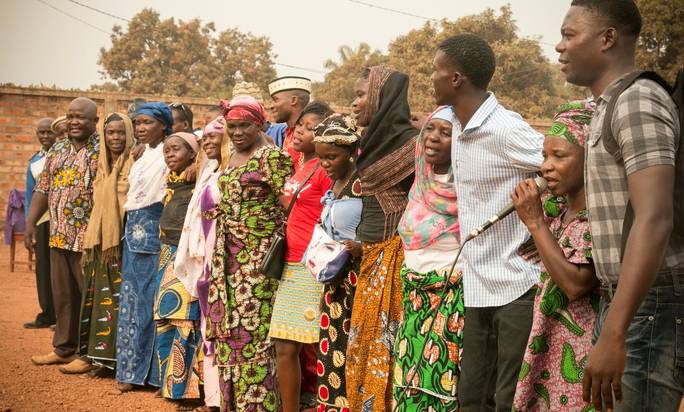
Disclaimer:
Through providing different aspects and ideas our aim is to compliment the great work that has been already done in the field of Interreligious and Intercultural Dialogue. Information and field data published in this resource are for informational purposes only, and neither KAICIID nor the Dialogue Knowledge Hub guarantee in any way success of the implementation of the activity.
While we wish all the activities and initiatives featured in this resource could be replicable in as many context around the world as possible, there are often certain limitations, such as the suitability for particular cultures or religious communities. However, there is always room to explore and adjust activities in regards to the community’s environment.
- Cyprus
- France
- Advocacy
- Capacity Building & Empowerment
- Democracy
- Educational Programmes
- Freedom of Movement
- Freedom of Religion and Belief
- Intercultural Dialogue
- Interreligious Dialogue
- Networking
- Peace
- Pluralism
- Shared Human Values
- Social Cohesion & Citizenship
- Social Work & Community Service
- Sports
- Youth
- Christianity
- Islam
- Multireligious
Interfaith Sporting Events
Youth from different religious and social backgrounds can play a sport together, for example football, in mixed teams to showcase interreligious coexistence. This event normally takes place in the environment linked to this sport (ex: on a football field), with a greater impact when it is implemented in neighborhoods of a city where there are interreligious tensions. It is advised to organize such sport encounters on a regular basis (more than only once as a symbolic event), so as to animate the neighborhood and establish long-term bonds.
Moreover, youth of different cultural and religious backgrounds can gather to hike along and across conflictual borders for peace and as a symbol of unity. Through this initiative, the participants can prove that living and walking through the same path regardless of their differences is possible.
- Austria
- Germany
- Italy
- USA
- Capacity Building & Empowerment
- Confessional / Religious / Spiritual Activities
- Democracy
- Educational Programmes
- Freedom of Religion and Belief
- Interreligious Dialogue
- Networking
- Pluralism
- Social Cohesion & Citizenship
- Social Work & Community Service
- Youth
- Christianity
- Islam
- Judaism
- Multireligious
Interfaith Conference
An interfaith organization invites individuals from all faiths and young leaders to attend an interfaith conference. This conference should preferably take place in a country with high religious diversity. This kind of conference should happen on a regular basis to build bridges between religions and to help jumpstart a variety of a variety of interfaith projects.
- Costa Rica
- Cyprus
- Ireland
- Madagascar
- Rwanda
- USA
- Advocacy
- Capacity Building & Empowerment
- Confessional / Religious / Spiritual Activities
- Democracy
- Diplomacy
- Educational Programmes
- Environment
- Freedom of Expression
- Freedom of Religion and Belief
- Information Distribution
- Intercultural Dialogue
- Interreligious Dialogue
- Intrareligious Dialogue
- Networking
- Peace
- Pluralism
- Shared Human Values
- Social Cohesion & Citizenship
- Social Work & Community Service
- Youth
- Bahai Faith
- Christianity
- Islam
- Judaism
- Multireligious
Youth Empowerment
It is important to train and empower the youth to engage in interfaith dialogue and activities, for they are the future of societies, communities, and nations. Youth can be engaged through intensive activities and events for high school students from various religious backgrounds. Students can gather from across a country to participate in discussions, visit different houses of worship, engage in workshops on religions, spirituality, peacemaking, and leadership, and translate beliefs into action through service and justice events. The practice is supervised by mentors, and empowers young people to be leaders for social change and to foster relationships across religious communities. The youth can also be trained to be successful peace ambassadors. Young individuals of all faiths receive training on peace and interfaith dialogue throughout the year. The organization in question thus insures that the next generation is putting their learned skills to good use, and is capable of taking on responsibilities in the future. Other activities can also teach the youth conflict mediation. For example, “Better your Country”, a two-day event based on interfaith dialogue as a means to appease tensions among society, puts the youth at the forefront of mediation, and engages them in discussions on conflicts or issues affecting the country. This event aims at gathering young people from different cultural backgrounds and beliefs to display and share a variety of narratives and opinions.
Classrooms are also a great environment to foster interfaith dialogue and youth empowerment. An easy activity that can be implemented is the Love Dice, a paper-made educative tool. It aims to teach students about shared human values by playing with the Love Dice each morning and establish a goal for each day. On each side of the Dice students write universal values of caring and love, and thus playing with the Dice empowers them to share their cultures, beliefs, and their values based on the chosen universal value that they throw for that day. This goal revolves around treating others how one would wish to be treated, regardless of their cultural or religious identity. Moreover, interfaith dialogue and empowerment can be implemented through the educational curriculum.
Extra-curricular activities such as camps and scouts are a rife space for youth engagement and training. The InterFaith Youth Camp gives youth the opportunity to engage in change and contribute to their society and community. This small camp provides them with knowledge and gives them a space to build friendships from different religious, faith, and cultural communities. Similarly, the scout movement can enable young people of different backgrounds to meet through the scout movement. In Madagascar, people of the three different Scout branches (Catholic, Protestant and Lay) have decided to join hands in order to create more collective activities.
This practice welcomes children of all backgrounds and embraces their individual identities. It acknowledges the child’s experience, affirms their core sense of identity and belonging, and seeks to nurture their developing sense of environments and communities (home, school, local community, and faith or belief community, civil society). It endorses the youth’s faith and belief, thus it influences their sense of identity and belonging while it nurtures their sense for justice and peaceful coexistence.
- Cyprus
- Oman
- Rwanda
- USA
- Advocacy
- Capacity Building & Empowerment
- Confessional / Religious / Spiritual Activities
- Democracy
- Diplomacy
- Educational Programmes
- Environment
- Freedom of Expression
- Freedom of Religion and Belief
- Information Distribution
- Intercultural Dialogue
- Interreligious Dialogue
- Intrareligious Dialogue
- Networking
- Peace
- Pluralism
- Social Cohesion & Citizenship
- Buddhism
- Christianity
- Islam
- Judaism
- Multireligious
Interfaith Art
Art can be an innovative practice to promote interfaith dialogue and peaceful coexistence. Through exhibitions, murals, or classes, individuals of different backgrounds can unite together and create art that transcends beliefs and clashes. A community or an organization can organize an exhibition on particular characteristics of a religion to present to other faiths, to engage in understanding, interfaith dialogue and coexistence. Moreover, local artists can work with faith-based communities, local residents, and college students to produce murals that reflect shared values and hopes for their neighbourhood, therefore bridging religious, socio-economic, racial, and generational divides. For people who cannot use words to express how they feel or those who are subject to oppression, art can be a peaceful way of expression and protest. Art products can be gathered in a free exhibition in a public area to raise awareness. Ultimately this practice pushes participants to ponder and evaluate their preconceived ideas and prejudices through art.
- Costa Rica
- India
- Peru
- South Africa
- USA
- Advocacy
- Capacity Building & Empowerment
- Confessional / Religious / Spiritual Activities
- Democracy
- Diplomacy
- Educational Programmes
- Environment
- Freedom of Movement
- Information Distribution
- Intercultural Dialogue
- Interreligious Dialogue
- Intrareligious Dialogue
- Networking
- Peace
- Physical Infrastructure
- Shared Human Values
- Social Cohesion & Citizenship
- Christianity
- Islam
- Judaism
- Multireligious
Environment Campaign
By organising an environmental campaign, whether through trips to a public space, creating eco-villages, or fasting for the climate, this practice can bring people of different religions and backgrounds together to unite around the same values. They get together to work on a project designed to take care of the environment and to raise awareness of and advocate for it. Depending on the needs, the practice can be organised by religious communities, NGOs, schools and/or any level of government, as well as by any committed individuals. By promoting environmental issues, this promising practice can inspire people to collaborate, work with each other against their differences, and be environmentally friendly, thus it increases interfaith awareness and creates a space to gather and protect nature.
- Burkina Faso
- India
- Singapore
- UK
- Educational Programmes
- Intercultural Dialogue
- Intrareligious Dialogue
- Peace
- Physical Infrastructure
- Buddhism
- Christianity
- Hinduism
- Islam
- Jainism
- Judaism
- Multireligious
Creation of Interfaith Meeting Space
A religious community, a local government or an NGO is providing a place dedicated to interfaith dialogue in a multireligious city or territory. The space can either be used for dialogical events or serve as a co-working dialogue space. Through sharing the space with other people and/or interfaith associations, creativity and energy is enhanced, which benefits the quality of interfaith dialogue and the resulting actions. This design may assist under-resourced interfaith charities and NGOs by decreasing their respective overall costs
